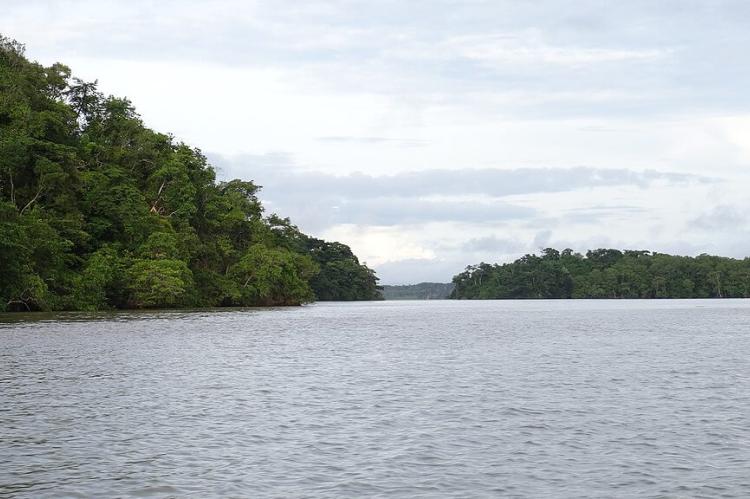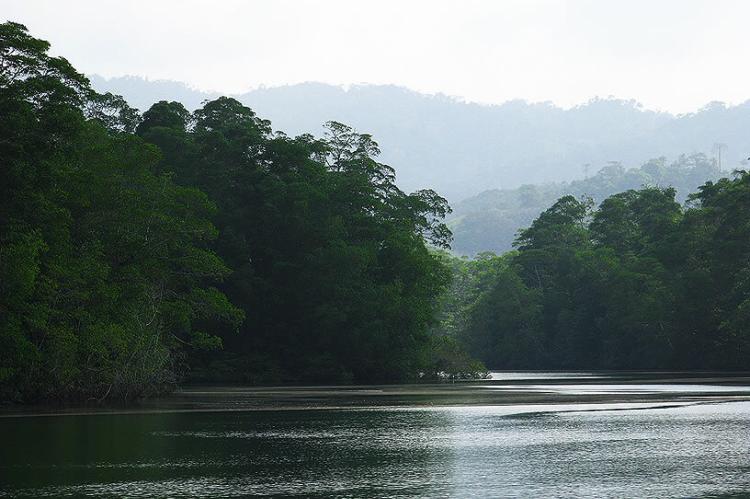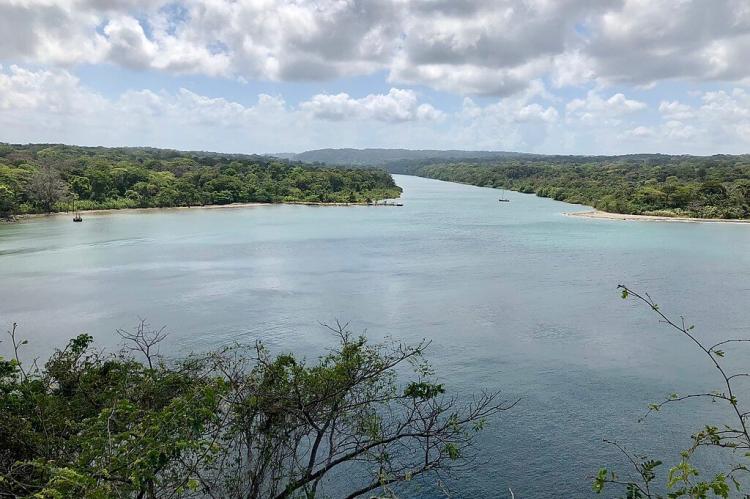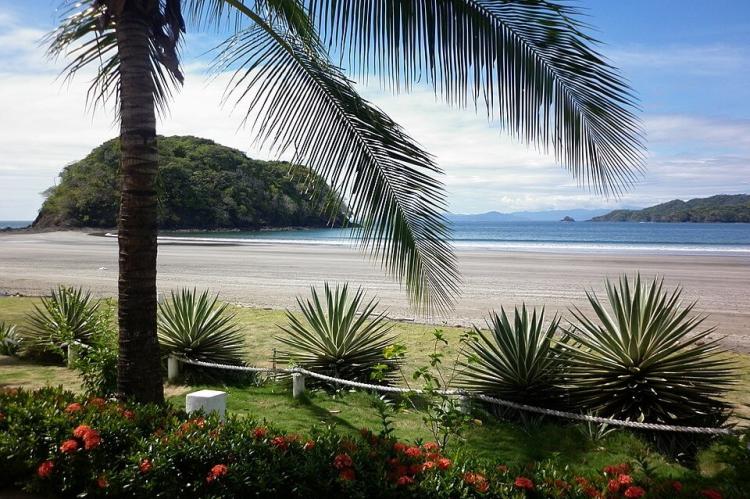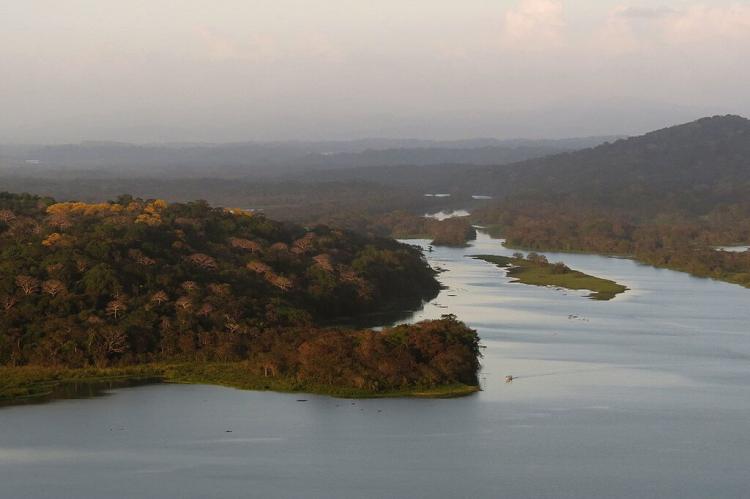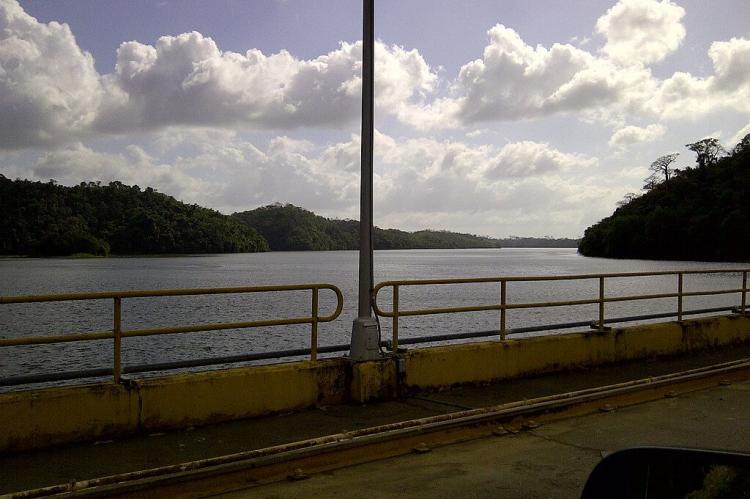Water Bodies of Panama
Panama's water bodies, including coastlines, rivers, and the Panama Canal, sustain rich ecosystems and vital industries and draw tourists to its shores. Exploring them reveals the country's natural beauty, history, culture, and the balance between human activity and environmental preservation.
Water Bodies of Panama
Panama's water bodies, from its extensive coastlines to the iconic Panama Canal and intricate river systems, are central to its geography, ecology, and economy. They sustain rich ecosystems, support vital industries like fishing and transportation, and draw tourists to its shores. However, these waterways face threats like pollution and overexploitation, emphasizing the need for sustainable management. Exploring Panama's water bodies unveils its natural beauty, history, culture, and the balance between human activity and environmental preservation.
Gulfs, Bays, and Coastal Lagoons
Gulf of Panama: The Gulf of Panama is a large gulf on Panama's Pacific coast. It is one of the country's most prominent features, and its strategic location played a crucial role in the construction and operation of the Panama Canal. Picturesque landscapes, including islands and coastal mountains, surround the gulf.
Gulf of Parita or Parita Bay: A gulf off the coast of Herrera Province. It forms the western section of the Gulf of Panama and is located between Puerto Obaldia, Coclé, and the mouth of the Rio Grande.
Gulf of San Miguel: Situated on the eastern side of the Azuero Peninsula on Panama's Pacific coast, the Gulf of San Miguel is known for its beautiful beaches and vibrant marine life. The area attracts tourists and is popular for sport fishing and boating.
Gulf of Montijo: Located in the Gulf of Chiriqui on the Pacific coast, the Gulf of Montijo is a picturesque area known for its mangrove forests and diverse marine life. The gulf is part of the Gulf of Chiriqui National Marine Park, protecting its natural beauty and biodiversity.
Gulf of Chiriqui: The Gulf of Chiriqui is a large gulf on the Pacific coast of Panama, famous for its numerous islands, sandy beaches, and coral reefs. It is a popular destination for ecotourism and offers opportunities for snorkeling, scuba diving, and observing marine wildlife.
Almirante Bay: Almirante Bay is a large bay located on the Caribbean coast of Panama near the Bocas del Toro Archipelago. The bay is an essential port for banana exports and is surrounded by lush rainforests, offering a unique blend of natural beauty and economic activity.
Chiriquí Lagoon: Chiriquí Lagoon is a coastal lagoon near the Gulf of Chiriqui on Panama's Pacific coast. The lagoon is a haven for wildlife, including various bird species, and is part of the Gulf of Chiriqui National Marine Park.
Gulf of San Blas: The Gulf of San Blas is a large gulf on the Caribbean coast, surrounded by the San Blas Archipelago. It is home to a diverse range of marine life, making it a popular destination for snorkeling and diving.
Notable Lakes and Inland Lagoons
Miraflores Lake: Miraflores Lake is an artificial lake formed as part of the Panama Canal infrastructure. It is situated near the Miraflores Locks, one of the main sets of locks used in the canal. The lake contributes to the canal's efficient operation by providing a water reservoir to control the water levels during ship transits.
San Pablo Lagoon: In Darién Province, the San Pablo Lagoon is a scenic inland lagoon surrounded by tropical rainforests and mangroves. It is part of the larger Darién National Park, a UNESCO World Heritage site known for its rich biodiversity and unique ecosystems.
Lake Gatuncillo: Lake Gatuncillo is a smaller artificial lake adjacent to Gatun Lake and plays a supplementary role in managing water levels for the Panama Canal.
Notable Dams and Reservoirs
Gatun Dam and Gatun Lake: The Gatun Dam is one of the most essential structures of the Panama Canal. Completed in 1913, it created Gatun Lake, one of the largest artificial lakes in the world. Gatun Lake serves as a crucial waterway for the Panama Canal, providing the necessary water volume to operate the locks and facilitate ship transits. Additionally, the lake is a popular spot for fishing, boating, and other recreational activities.
Madden Dam and Madden Lake (or Alajuela Lake): The Madden Dam, built on the Chagres River, forms Madden Lake. Completed in 1935, this artificial reservoir supports the operation of the Panama Canal by regulating the water flow and maintaining a constant water level in Gatun Lake. Furthermore, Madden Lake is a significant source of hydroelectric power, contributing to Panama's renewable energy generation.
Bayano Dam and Bayano Lake: The Bayano Dam, constructed on the Bayano River, created Bayano Lake, the largest natural lake in Panama. Completed in 1976, the dam serves multiple purposes, including hydroelectric power generation and water supply for the Panama City metropolitan area. The lake's surrounding areas are popular for outdoor activities and ecotourism.
Fortuna Dam and Fortuna Reservoir: The Fortuna Dam was built on the Chiriqui Viejo River, which created the Fortuna Reservoir. This reservoir, completed in 1979, is essential to Panama's hydroelectric power generation. It contributes to the country's energy capacity and provides a valuable water supply and irrigation resource.
La Yeguada Dam and La Yeguada Reservoir: The La Yeguada Dam is situated on the Rio Grande de Santa Maria, creating the La Yeguada Reservoir. This dam serves primarily for irrigation purposes, providing water to agricultural lands in the region. The surrounding area has become a popular destination for nature lovers and outdoor enthusiasts.
El Bajito Dam and El Bajito Reservoir: The El Bajito Dam was constructed on the Chame River, forming the El Bajito Reservoir. This dam and reservoir contribute to Panama's water management system, providing water supply and irrigation resources in the region.

Panama physiographic map.
Notable Rivers
Chagres River: The Chagres River is one of the most important rivers in Panama. It originates in the Cordillera Central and flows into Gatun Lake, forming a crucial part of the Panama Canal's waterway system. Lush tropical rainforests surround the Chagres River and serve as a habitat for diverse flora and fauna.
Tuira River: The Tuira River is the longest in Panama, flowing through the eastern Darién Province and emptying into the Golfo de San Miguel on the Pacific coast. The river and its surrounding mangroves are vital ecosystems that support various wildlife species, including birds, mammals, and marine life.
Chucunaque River: The Chucunaque River is a tributary of the Tuira River in Darién Province. It is the longest river in Panama at 215 km (134 mi) long, flowing through the southeastern part of the region. It is an essential water source for the indigenous communities living in the area and sustains the diverse flora and fauna of the surrounding rainforest.
Bayano River: The Bayano River is another significant river in Panama, originating in the eastern part of the country and flowing into Bayano Lake. The river and its basin are essential for Panama's hydropower generation, as the Bayano Dam on this river creates one of the country's largest artificial reservoirs.
Chepo River: The Chepo River is located in the Chepo district of Panama. It's also known as the Chepo-Bayano because of its connection to Bayano Lake. The river is 206 km (128 mi) long and is the third longest river in Panama. It flows towards and into the Pacific Ocean.
Santa Maria River: The Santa Maria River is located in the western province of Veraguas. Before reaching the Pacific Ocean, it flows through diverse landscapes, including mountainous regions and tropical forests.
Chiriqui Viejo River: The Chiriqui Viejo River is a major river in western Panama, flowing through the province of Chiriqui. It is a natural boundary between Panama and Costa Rica in some areas and supports local communities' livelihoods.
Jaqué River: The Jaqué River flows through the town of Jaqué and into the Gulf of San Miguel on Panama's Pacific coast. It is an important river for transportation and connects the interior of the Darién Province and the coastal areas.
Indio River: The Indio River is a river in eastern Panama that flows through the Darién Province. It is important for the indigenous communities in the region because it provides resources for fishing and agriculture.
Sixaola River: The Sixaola River forms part of the border between Panama and Costa Rica in Bocas del Toro. It flows through diverse landscapes, including lowland rainforests and mangrove swamps.
San Blas River: The San Blas River is in the autonomous indigenous region of Guna Yala (formerly San Blas). It is a vital water resource for the Guna people and supports their traditional way of life.
La Villa River: The La Villa River flows through the Coclé Province in central Panama. It is a significant river for agriculture and supports the irrigation of farmlands in the region.
Pacora River: The Pacora River is a river in eastern Panama that flows through the Darién Province. It is an important waterway for local communities and contributes to the region's ecological diversity.
Other Rivers
The following is an exhaustive list of other rivers in Panama. Note that this list includes major and minor rivers and streams, and the names of some smaller rivers may vary across different sources and maps.
- Rio Grande: a river in Coclé Province. Its mouth is in the Gulf of Panama on the Pacific Coast
- Chiriqui Viejo River: originates on Cerro Picacho, Volcan Baru, the highest elevation of Panama
- Indio River: flows into the Caribbean Sea in Colón Province
- Sixaola River: courses from the Cordillera Talamanca to the Caribbean Sea
- La Villa River: originates in Montuoso National Park in Herrera Province
- Caldera River: flows through Volcán Barú National Park in Chiriqui
- Tabasará River: flows through Chiriquí province and empties into the Pacific Ocean
- Guarumo River: a stream in Bocas del Toro
- Fonseca River: a stream in Chiriquí, located near Ola and La Peña
- Boquerón River: located in Chiriquí Province, popular for rafting and kayaking
- Majé River: situated in the tropical forest of the Majé mountain range
- Guanabano River (or Changena River): a stream located near Clayton and Embassy Gardens
- Coclé del Norte River: located in north-central Panama and flows into the Caribbean Sea
- Pequení River: a stream that is part of the Panama Canal Watershed
- Parita River: located in Herrera Province
- La Villa River: flows for 150 km (93 mi), Los Santos Province, Azuero Peninsula
- San Pablo River: originates in the Tabasará mountains in northern Veraguas Province and runs for over 80 km (50 mi) before emptying into the Gulf of Montijo
- Portobelo River: located between the San Blas Islands and the Panama Canal
